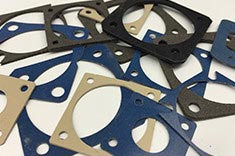EMI Shielding Products
- Custom Gasket Fabrication
- Connector Gaskets
- Bonded O Ring
- Custom Gaskets
- Conduct-O-Knit Knitted Wire Mesh
- Conduct-O-Seal Combo Gasket
- Conduct-O-Elastomer
- Conduct-O-Seal Oriented Wire in Silicone Gasket Material
- Conduct-O-Mesh Tape
- Conduct-O-Foam
- Conduct-O-Bond
- Optical Filters For Electronic Displays
- Shielded Vent Panels
- ESC Board Level Shielding
- 300 Series
Understanding How EMI and Electronic Devices Work Together
Humans create magnetic fields. Of course, there are natural sources such as solar flares, auroras, and lighting, but these sources are insignificant when compare to human-made sources. Conventional causes of EMI come from bar magnets, solenoids, transformers, and some modern motors. Magnetic fields are frequently used in creative ways, like to create sound, microscopic imagery, and for recoding resonance images in MRI technology. Although magnetic fields are necessary at times, there are many times where they can negatively affect devices and systems that they are near.

How is it possible to deal with problems caused by excess magnetism?
Before understanding how to protect electronics from magnetic fields, it is first essential to understand what EMI (electromagnetic interference) is. EMI is considered electromagnetic energy that harms the performance of electrical or electronic equipment. Typically, EMI will create undesirable responses and contribute to operational failure.
The best way to protect electronics is with EMI shielding. Shielding works by using high-permeability materials that both absorb and redirect magnetic lines of flux. Highly effective shields are box or cylindrical enclosures that have cap ends. EMI fields cannot find gaps in these enclosures so devices will not be subjected to unintended interference.
What is your electronic device’s EMC (electromagnetic compatibility)? EMC gauges the ability of electrical equipment to function appropriately in intended environments without having performance degradation from unintentional EMI sources.
EMI Shielding
EMI shields and EMI gaskets allow for most modern electronics to function in the world properly. Without gaskets and shields, modern cars and smart phones would not perform well.
Related Reading
- Why Does Plastic Electronics Need EMI Shielding?If you build electronic devices with plastic parts or housings, do not neglect the device’s need for protection from EMI and RFI. We provide top-quality RFI shielding and EMI shielding.
- EMI Shielding Measurements and Testing
- EMI Gaskets and Shielding for the Modern Automotive Industry
- Integrated Circuits Have Problems with EMI
- RFI and EMI: Frequent Questions



